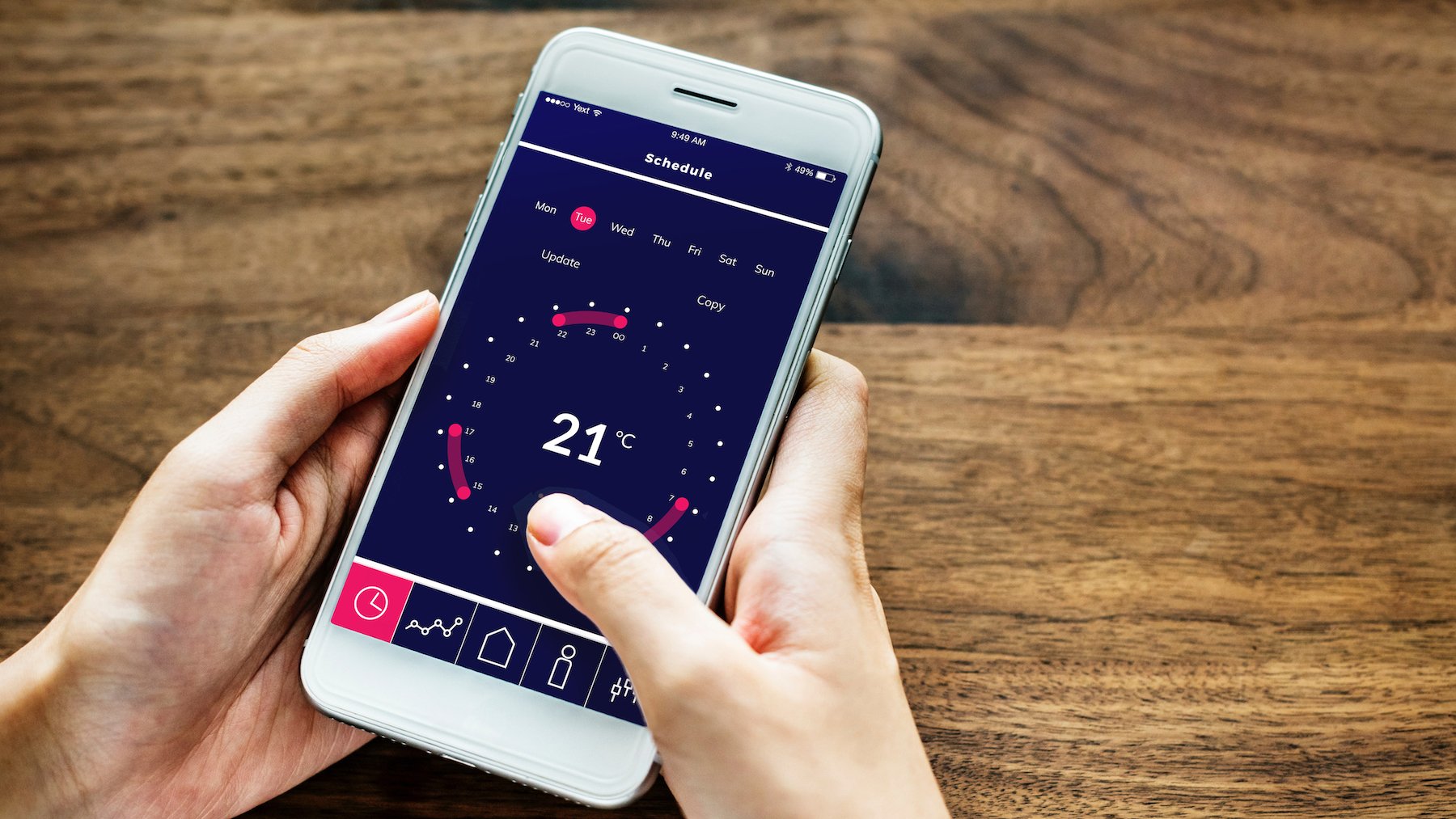
Industrial design and user interface of a smart temperature control system for social housing.
CoControl develops smart heating control systems that ensure tenants can be comfortable in their home, while carefully managing their energy usage and bills.
CoControl provides Europe’s first heating control and social metrics system, which is tailored specifically to the needs of social housing providers and their tenants, many of whom are living in a state of fuel poverty.
We updated the product design of CoControl’s system elements, focussing on clean, sleek visuals with intuitive interaction points and feedback loops.
“The simplified form allows the sensor to blend into the background of any interior space”
The minimal form of the temperature sensor, inspired by 1960s era industrial design, is meant to be inconspicuous in any twenty-first century living room. Comfortable sitting on a shelf, a windowsill, or a desk, the simplified form and small number of features allows the sensor to blend into the background of any interior space. The grille that allows air to circulate over the sensor becomes the main feature, and a small recessed indicator LED hidden behind the moulded body gives it a soft glow to inform the user of the sensor status. We wanted this to be a quieter, more subtle product than other typical home electrical devices.
“It was essential that the tactile design considered a diverse range of user abilities”
We designed the form and layout of the comfort remote to enable tenants to quickly and effectively control their heating in an intuitive way. It was essential that the tactile design considered a diverse range of user abilities and ages. Where most heating controls are overcomplicated, we kept this simple, offloading the more complex controls to a smartphone app, which can be controlled from anywhere.
“The smartphone app also allowed us to make the setup instructions more visually engaging”
We proposed a simplified interface with a premium feel and high level of visual clarity. The information and feedback were curated to provide an easy to understand snapshot of the current state of the system, as well as historic data. Incorporating the setup and instruction manual into the smartphone app also allowed us to make the setup instructions more visually engaging, and also meant we could reduce the number of extra components arriving in the product package.










